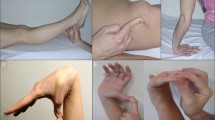Abstract
The presence of cardiovascular abnormalities in patients with spontaneous cerebrospinal fluid (CSF) leaks are not well-documented in the literature, as cardiovascular evaluation is not generally pursued if a patient does not exhibit additional clinical features suggesting an inherited connective tissue disorder. We aimed to assess this association, enrolling a consecutive group of 50 patients referred for spinal CSF leak consultation. Through echocardiographic evaluation and detailed medical history, we estimate that up to 20 % of patients presenting with a spontaneous CSF leak may have some type of cardiovascular abnormality. Further, the increase in prevalence of aortic dilatation in our cohort was statistically significant in comparison to the estimated population prevalence. This supports a clinical basis for echocardiographic screening of these individuals for cardiovascular manifestations that may have otherwise gone unnoticed or evolved into a more severe manifestation.
Similar content being viewed by others
References
Liu FC, Fuh JL, Wang YF, Wang SJ (2010) Connective tissue disorders in patients with spontaneous intracranial hypotension. Cephalalgia 31(6):691–695
Schievink WI (2006) Spontaneous Spinal Cerebrospinal Fluid Leaks and Intracranial Hypotension. JAMA 295(19):2286–2296
Reinstein E, Pariani M, Bannykh S, Rimoin DL, Schievink WI (2012) Connective tissue spectrum abnormalities associated with spontaneous cerebrospinal fluid leaks: a prospective study. EJHG 4:386–390
Mokri B, Maher CO, Sencakova D (2002) Spontaneous CSF leaks: Underlying disorder of connective tissue. Neurology 58:814–816
Schievink WI, Maya MM, Louy C, Moser FG, Tourje J (2008) Diagnostic criteria for spontaneous spinal CSF leaks and intracranial hypotension. Am J Neuroradiol 29:853–856
Mao SS, Ahmadi N, Shah B et al (2008) Normal thoracic aorta diameter on cardiac computed tomography in healthy asymptomatic adults: impact of age and gender. Acad Radiol 15:827–834
Palmieri V, Bella JN, Arnett DK et al (2001) Aortic root dilatation at sinuses of valsalva and aortic regurgitation in hypertensive and normotensive subjects: The hypertension genetic epidemiology network study. Hypertension 37:1229–1235
Freed LA, Levy D, Levine RA, Larson MG, Evans JC et al (1999) Prevalence and clinical outcome of mitral-valve prolapse. N Engl J Med 341:1–7
Schievink WI, Maya MM (2011) Frequency of intracranial aneurysms in patients with spontaneous intracranial hypotension. J Neurosurg 115(1):113–115
Mokri B (2008) Familial occurrence of spontaneous spinal CSF leaks: Underlying connective tissue disorder. Headache 48:146–149
Schrijver I, Schievink WI, Godfrey M, Meyer FB, Francke U (2002) Spontaneous spinal cerebrospinal fluid leaks and minor skeletal features of Marfan syndrome: a microfibrillopathy. J Neurosurg 96:483–489
Hiratzka LF, Bakris GL, Beckman JA et al (2010) ACCF/AHA/AATS/ACR/ASA/SCA/SCAI/SIR/STS/SVM guidelines for the diagnosis and management of patients with Thoracic Aortic Disease: a report of the American College of Cardiology Foundation/American Heart Association Task Force on Practice Guidelines, American Association for Thoracic Surgery, American College of Radiology, American Stroke Association, Society of Cardiovascular Anesthesiologists, Society for Cardiovascular Angiography and Interventions, Society of Interventional Radiology, Society of Thoracic Surgeons, and Society for Vascular Medicine. Circulation 2010(121):e266–e369
Acknowledgments
The authors bear full responsibility for the content of this publication.
Conflicts of interest
On behalf of all authors, the corresponding author states that there is no conflict of interest.
Ethical standard
All human studies have been approved by the appropriate ethics committee and have therefore been performed in accordance with the ethical standards laid down in the 1964 Declaration of Helsinki and its later amendments.
Author information
Authors and Affiliations
Corresponding author
Additional information
David L. Rimoin: Deceased.
Appendix
Appendix
Rights and permissions
About this article
Cite this article
Pimienta, A.L., Rimoin, D.L., Pariani, M. et al. Echocardiographic findings in patients with spontaneous CSF leak. J Neurol 261, 1957–1960 (2014). https://doi.org/10.1007/s00415-014-7438-0
Received:
Revised:
Accepted:
Published:
Issue Date:
DOI: https://doi.org/10.1007/s00415-014-7438-0




